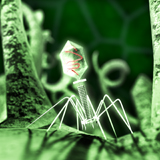Today, these community-based health care workers help women access routine breast screenings, and work to ease delays in test results and follow-ups. They attend community events, present workshops, and canvass women one-on-one to educate them about the reasons behind health disparities, how mammograms work, and how cancer is treated. Allgood describes them as compassionate, effective advocates and well-respected community members who understand the social issues facing the patients they serve. They are, Allgood says, the key to the project’s success. Having got the ball rolling, Allgood was charged, along with Hunt, with evaluating the hospital and community-based projects. The two epidemiologists assemble mammogram results, pathology reports, and clinicians’ suggested treatments, and they combine them with data collected in the community. They then go to work analyzing it. Last year, the project’s hospital-based workers saw more than 3000 patients and assisted them on 12,000 occasions in 50 distinct, documented ways. Over 3 years, the community-based health care workers responded to 5000 requests for help. It is too early to report whether the project is reducing mortality rates, Allgood says. Their analysis shows, however, that their programs are radically improving some interim metrics. Today, 95% of African-American women in the project’s target communities return for a checkup after a suspicious mammogram, up from 66% before the project began.
Wanted: teamwork, statistics, and a passion for social justice
Cancer geneticist Rick Kittles, whose work at UIC identifies genetic and environmental factors that lead to cancer health disparities, says that statistical savvy is important in the work that Allgood is doing—but that social savvy is important, too. Whitman echoes that sentiment: “Too many young people coming into the field of epidemiology … do not know enough about the world and how it works,” he says. The work is highly interdisciplinary and depends on effective communication among scientists, staff, doctors, and patients—as well as with funders and policymakers.
Fundraising, in fact, is one of the job’s biggest challenges. “We work tirelessly to either keep the funding or find new avenues to fund [our] programs,” Allgood says. Allgood, Hunt, and the other epidemiologists write reports for and make presentations to stakeholders who can influence the health policies adopted by the city government.
To get involved in health disparities work, one must, of course, have the basic credential: at least a master’s degree in public health, Whitman says. One needs hands-on experience in gathering, curating, and analysing data; statistics is becoming ever more important as the field becomes more data-driven.
Alongside such training, those pursuing this career should have a passion for social justice and be ready to think critically about how society-level decisions impact individual health, says Jennifer Orsi, a data analyst at Walgreens in Deerfield, Illinois, who previously worked as an epidemiologist at SUHI. An affinity for teamwork is also essential.
The SUHI team is growing. Right now, SUHI is recruiting a community health educator. Since Allgood joined SUHI, the number of epidemiologists has doubled. Each is waging war against a different disease: asthma, diabetes, and HIV, along with more complex conditions such as chronic obstructive pulmonary disease and obesity. Many approaches are shared among projects. “We all work together to help each other,” Allgood says. “It is really nice to have that backup.”
